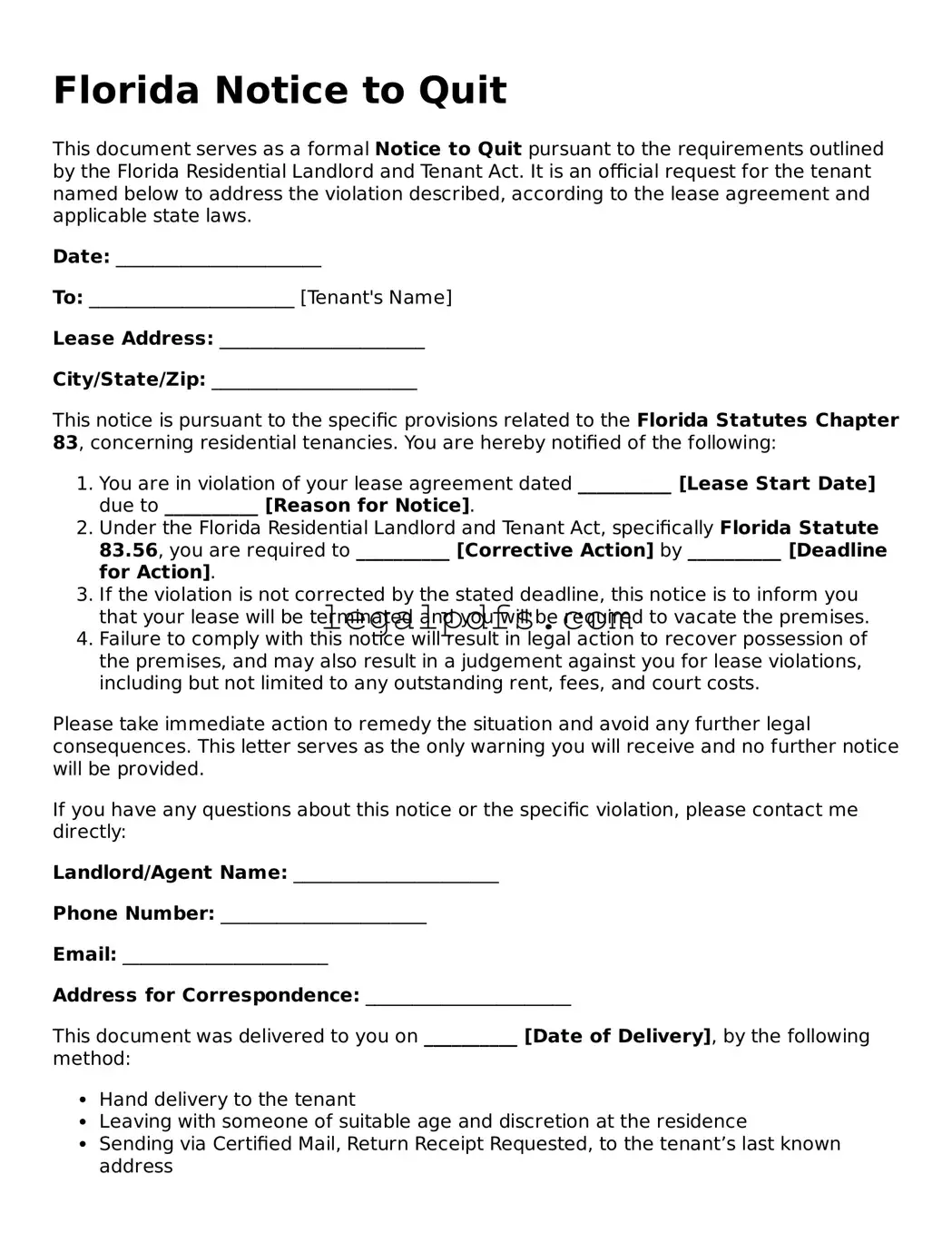Florida Notice to Quit
This document serves as a formal Notice to Quit pursuant to the requirements outlined by the Florida Residential Landlord and Tenant Act. It is an official request for the tenant named below to address the violation described, according to the lease agreement and applicable state laws.
Date: ______________________
To: ______________________ [Tenant's Name]
Lease Address: ______________________
City/State/Zip: ______________________
This notice is pursuant to the specific provisions related to the Florida Statutes Chapter 83, concerning residential tenancies. You are hereby notified of the following:
- You are in violation of your lease agreement dated __________ [Lease Start Date] due to __________ [Reason for Notice].
- Under the Florida Residential Landlord and Tenant Act, specifically Florida Statute 83.56, you are required to __________ [Corrective Action] by __________ [Deadline for Action].
- If the violation is not corrected by the stated deadline, this notice is to inform you that your lease will be terminated and you will be required to vacate the premises.
- Failure to comply with this notice will result in legal action to recover possession of the premises, and may also result in a judgement against you for lease violations, including but not limited to any outstanding rent, fees, and court costs.
Please take immediate action to remedy the situation and avoid any further legal consequences. This letter serves as the only warning you will receive and no further notice will be provided.
If you have any questions about this notice or the specific violation, please contact me directly:
Landlord/Agent Name: ______________________
Phone Number: ______________________
Email: ______________________
Address for Correspondence: ______________________
This document was delivered to you on __________ [Date of Delivery], by the following method:
- Hand delivery to the tenant
- Leaving with someone of suitable age and discretion at the residence
- Sending via Certified Mail, Return Receipt Requested, to the tenant’s last known address
Document prepared by:
______________________
This is intended to be a formal legal notice in accordance with the laws of the State of Florida and the terms of your lease agreement. Taking timely action to resolve the issue is in your best interest.
